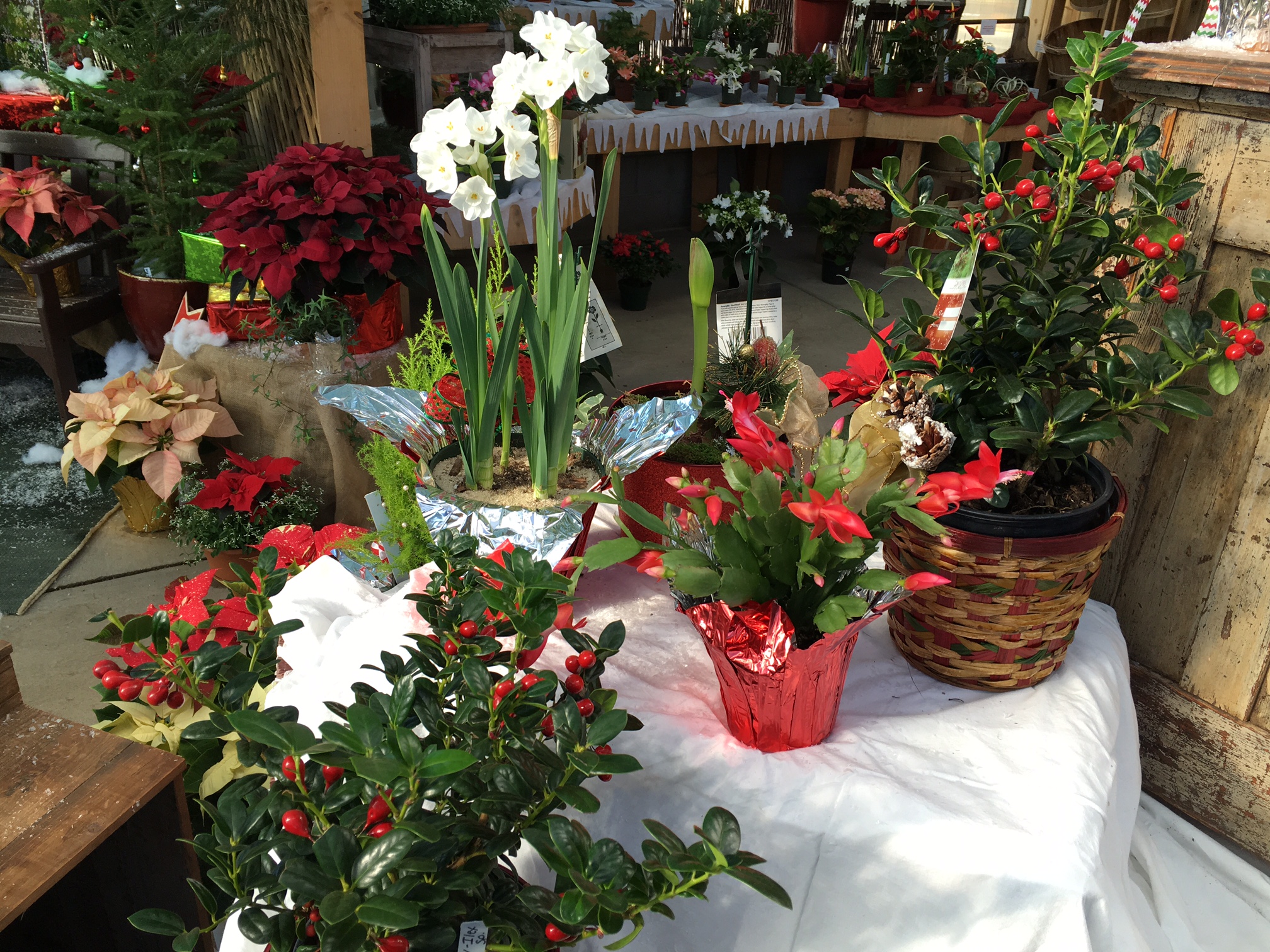“Bring in the trailing forest-moss,
Bring cedar, fir, and pine,
And green festoon, and wreath, and cross,
Around the windows twine!
Against the whiteness of the wall
Be living verdure seen,
Sweet summer memories to recall,
And keep your Christmas green.”
Lucy Larcom
Poinsettia (Euphorbia pulchermia)
Select plants with uniformly green foliage and no lower leaves missing.
Moderately moist soil; water thoroughly whenever the soil feels dry to the touch.
Ideal temperatures are 60F to 70F.
Poinsettia plant parts are not edible, but they are not poisonous when eaten.
Those whom are sensitive to latex, may develop a rash when handling poinsettias.
Christmas Cactus (Schlumbergera bridgesii)
Let the plant dry out slightly between waterings (soil should be rich and porous).
Ideal temperatures are 60F to 70F. (medium to bright light without direct sun).
This tropical, jungle plant needs to be kept from cold windows and drafts.
Norfolk Island Pine (Araucaria heterophylla)
Slow-growing evergreen, seldom needs repotting.
Indirect light
Moderately moist soil; water thoroughly whenever the soil feels dry to the touch.
Ideal temperatures are 60F to 70F.
Amaryllis
Indirect light (heat and bright light cause the blooms to wither prematurely).
Water whenever the top 1″ of soil is dry-no more than once every 3 days. If possible, water from
the bottom to keep top of bulb from rotting.
Ideal temperatures are 60F to 70F.
Place a support close to the bulb (do not pierce the bulb) to support the heavy flower stem as it
develops.
General rule of thumb for holiday plant care (if no plant care card is available)
Evenly moist (soil should feel like a squeezed out sponge) do not let plant stand in water, drain drip
trays
Keep plants from drafts, cold windows, and dry heat (room temperature range 60F – 70F is ideal)
Indirect light is light which streams through an east facing window or south/west window facing in
the winter
Fertilizing, (during winter months Nov-Feb) 1 time per month at half the normal rate noted on the
product. (i.e. Normal Rate for granular: 1 Tablespoon per gallon of water – convert to 1-1/2
teaspoons per gallon of water). Plants are in their dormant period and not producing much new
growth.

